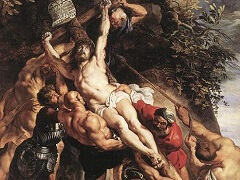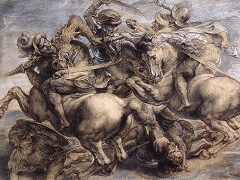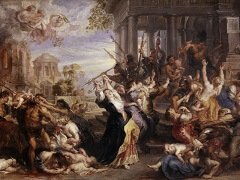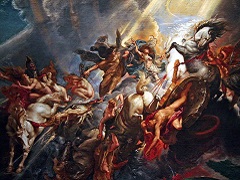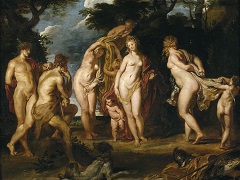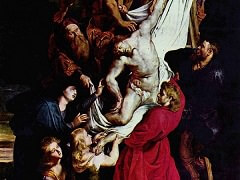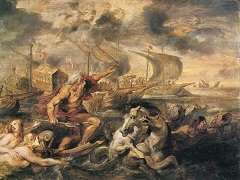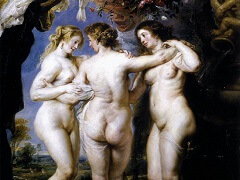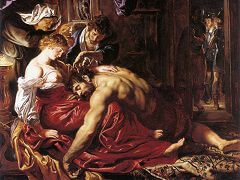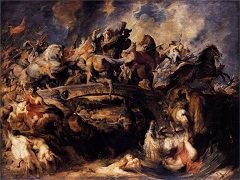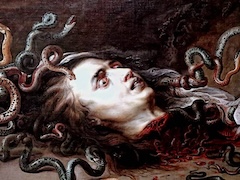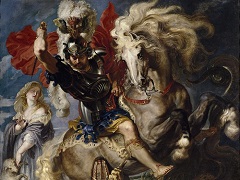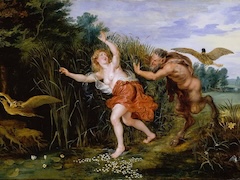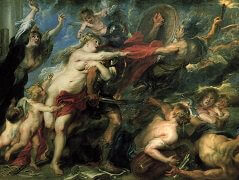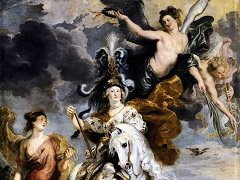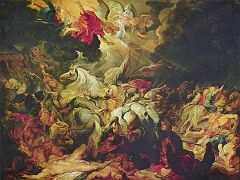Perseus Freeing Andromeda, 1607 by Peter Paul Rubens
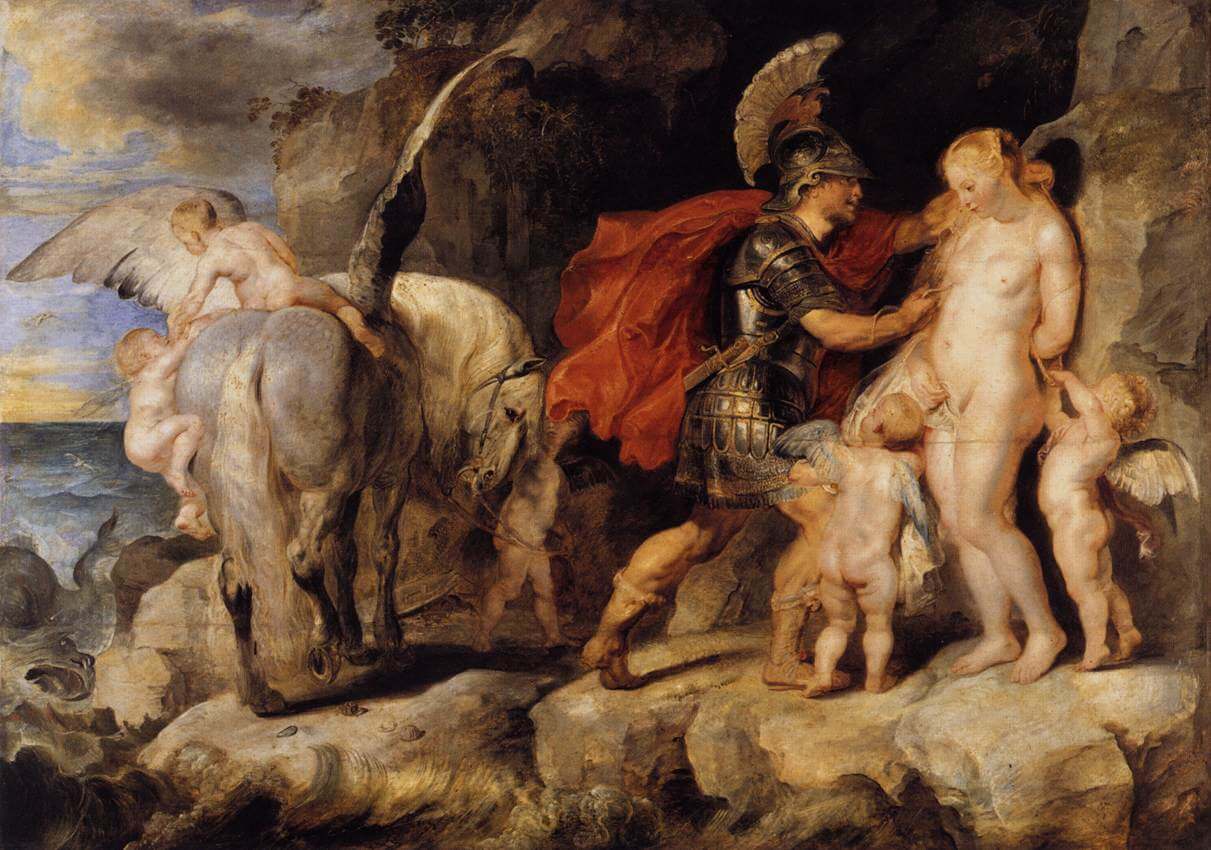
Chained to a rock, Andromeda, daughter of the King of Ethiopia, was to be sacrificed to a sea-monster. The king had been ordered to make this sacrifice, in order to make amends for the arrogance of his wife, Cassiopeia. As Perseus, who had vanquished the dreaded Gorgon Medusa, was returning home on his winged horse, Pegasus, he caught sight of the chained Andromeda and delivered her from the threat of the monster. Overcome by the beauty of the young princess, her liberator confessed his love: 'Oh, thou deservest not chains such as these but only the bonds that unite passionate lovers'.
Rubens knew how to translate the popular, widely-known poetry of Ovid into his own special language. On a sea-girt spur of rock Perseus steps towards the royal princess. Dressed in gleaming armour and in the red cloak of the conqueror, he loosens the chains binding the naked maiden, who stands with downcast eyes. Two putti, who, to the best of their ability, are lending a hand, also seem not uninterested in the human side of the encounter; three others are attending to the winged, dapple-grey horse, which is impatiently pawing the rock with its hoof. In the depths of the blue sea the winding coils of the monster appear.
Many pictorial themes in Flemish Baroque painting, particularly that of the humanist and diplomat Rubens, are by no means confined to depicting events. The story of Andromeda, for example, was also given political significance, and this kind of material, as an allegory of oppression and liberation in the struggle against enemy powers, was open to a great variety of interpretations. Indeed, the Berlin picture was painted at practically the same time as Rubens' most important work in the field of political allegory, the great cycle of wall-paintings commissioned by Marie de Medicis in Paris in 1622.
Rubens treated the same theme in a picture of similar size and design, now in the Hermitage in St. Petersburg.

